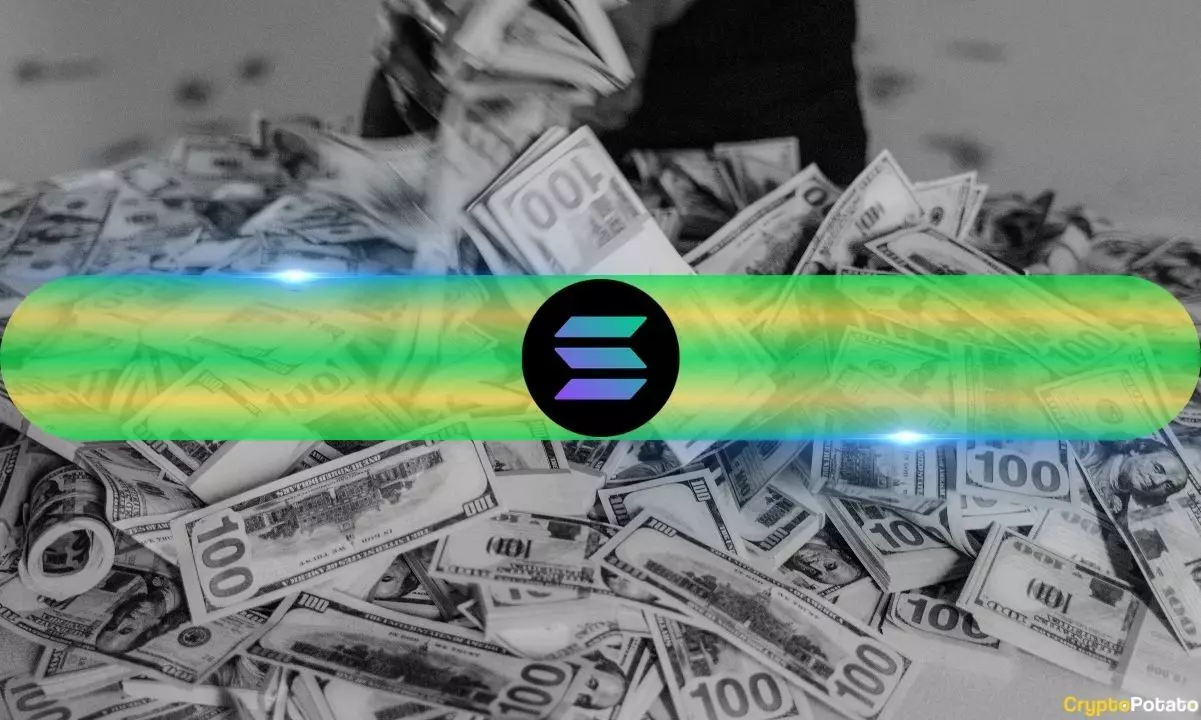In the fast-evolving landscape of blockchain adoption, Solana stands on the cusp of a seismic shift that many are overlooking. While Bitcoin and Ethereum enjoy a relatively well-established institutional presence, Solana remains a silent giant—its true potential yet to be unlocked on a mass scale. Bold predictions from industry giants suggest that this overlooked chain could soon eclipse its peers, but skepticism remains rooted in complacency and failed assumptions about blockchain adoption timelines.
Despite a relatively modest market cap compared to its predecessors, Solana’s technical fundamentals and real-world integrations are compelling. Leading fintech companies like Stripe and payment giants such as PayPal actively develop on its network. This indicates that progressive industry players see tangible value in Solana’s architecture, especially its high throughput and low transaction costs. Yet, surprisingly, institutional ownership remains minimal—less than 1% of the total supply—placing Solana at an early, exploitable stage of growth.
This under-allocation presents a stark contrast with Bitcoin’s 16% institutional holdings and Ethereum’s 7%, which have been partly driven by the proliferation of ETFs and corporate investments. The absence of a dedicated Solana ETF is not an obstacle but an opportunity. Market regulators’ hesitance to approve such funds has inadvertently created a gap that could be filled swiftly once approvals are secured—projected as early as Q4 2025. When that happens, institutional demand could surge, igniting a wave of adoption that transforms Solana from a niche chain into a mainstream asset.
Strategic Movements Indicate a Turning Point
The recent fundraising efforts by Nasdaq-listed Helius Medical Technologies exemplify a strategic shift. Raising over $500 million—far exceeding initial expectations—through a PIPE deal backing Solana, portrays a firm belief in its long-term value. The company’s plan to allocate treasury funds to purchase SOL highlights a recognition that these tokens will grow in value as adoption accelerates. This move demonstrates not only confidence but a strategic positioning to benefit from the chain’s growth—a classic growth investment in the making.
Such treasury activities are not trivial; they serve as indicators of institutional confidence building. When firms allocate significant resources into SOL reserves, it suggests they see a sustainable, long-term advantage. Goldman Sachs and other major players haven’t yet fully committed, but these preliminary steps hint at an emerging shift in market dynamics—a shift that could catalyze future institutional participation.
While market cap remains small, the technological supremacy of Solana becomes more evident when measured against what truly matters for scalable ventures: transaction speed, user engagement, and network capacity. Its ability to process more transactions efficiently positions it as the backbone for high-growth DeFi, dApps, and enterprise integrations. This makes the argument that price alone isn’t a true reflection of value—on-chain activity and ability to scale are equally important metrics overlooked by many investors.
My Skeptical Take: Are We Overestimating the Hype?
While optimistic projections from Pantera Capital and other analysts are enticing, history cautions us against overenthusiasm in unproven narratives. Institutional hype often runs ahead of actual adoption, and blockchain hype cycles have repeatedly led investors astray—before sharp corrections. Solana’s volatile nature—characterized by its 80% historical swings—raises questions about its readiness for the “big league.” As a center-right observer, I must point out that high volatility and nascent institutional engagement warrant caution; markets rarely reward early bets without patience.
Moreover, the assumption that ETF approvals will trigger a flood of institutional money is optimistic. Regulatory bottlenecks and political considerations continue to hinder swift approval, and institutional players are still cautious about exposure to potential chain vulnerabilities, decentralization issues, or network downtime—problems Solana has faced in the past. We should therefore temper our expectations and consider whether the growth is as inevitable as some proponents suggest or if it hinges on a series of unlikely regulatory breakthroughs.
Yet, the push from treasury firms and venture capital indicates an evolving recognition of Solana’s intrinsic advantages. These entities are actively betting on its future, and their involvement could be catalytic. Still, potential pitfalls such as network centralization, security concerns, and broader macroeconomic shifts might slow or even derange the current trajectory. This means that while the opportunity is substantial, the risk of overhype and sudden corrections must not be dismissed.
In essence, ignoring Solana now would be akin to dismissing a sleeping giant—one that could unleash a new wave of blockchain adoption and redefine the competitive landscape. But buying into the hype without acknowledging the risks could be a costly mistake. As demand finally catches up with industry fundamentals, patient, strategic investors willing to navigate volatility might find themselves in a position of outsized gain. The question remains: will they recognize the opportunity before it’s too late?

